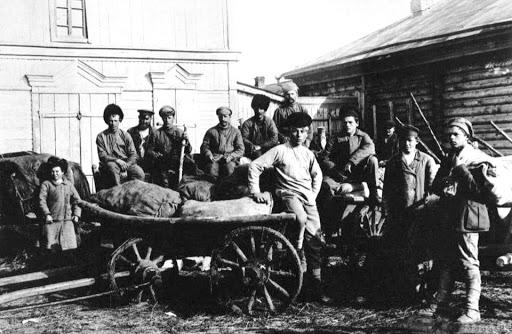
FROM THE “WAR COMMUNISM” TO NEW ECONOMIC POLICY (NEP)
1921 year. The Bolsheviks finally won the Civil War. During the fighting on the territory occupied by them, it had started the "War communism". They mobilized all their forces for the final destruction of the White movement. That meant they moved heaven and earth. All food and the industrial products were allocated to the military. As a result, the agriculture being already getting into deep waters, has been receiving the agricultural machinery almost three times less than it should be. The farmworkers have reduced the output by 4.5%. The result was not slow to arrive. The destroyed country was seized by the severe famine. About five million people have died. Such a policy very soon made it presence felt. The social discontent was growing. The small farmers and workers did not wish such authority of the people’s will supporting the Bolsheviks. The serious socio-political crisis was boiling up in the country. The anti-Bolshevik revolts broke out in some regions. It is enough to recall the “Antonovskoye Uprising" in the Tambov province, where under the violent suppression more than eleven thousand people were killed. And the Kremlin realized that it was necessary to change the policy. It was decided for the essential relaxation of the rules. Of course, this went against what they have declared as the nationalization of all industry, the ban on the private property and the drawdown of the commodity-money relations. In order to somehow save the situation in the country, the Soviet authorities had to use the hateful methods of the capitalist economy. It was announced the New Economic Policy in the country of the victorious proletariat and the peasantry. The leader of Soviet Union has announced it on March 14, 1921 at the 10th Congress of the Russian Communist Party of the Bolsheviks.
THE RESULTS OF THE “WAR COMMUNISM” POLICY IN KAZAKHSTAN
Dissatisfaction with the "War communism" has not left Kazakhstan. The population of the republic like all the citizens of the former Russian Empire felt the negative influence of this policy. The new government has nationalized almost 350 enterprises of Kazakhstan and almost 270 of them were idle, which meant that people were left without work and means of existence. The agriculture has almost declined. Although more than 4.5 million people lived in the villages that time. It was especially deplorably affected the livestock. The number of the livestock had been decreased by almost 2 million heads. In addition, the situation with the cultivated areas weren't much better. Thus, they have been decreased more than two times in the Uralsk province and more than three times in the Semirechensk region. The situation was aggravated by the severe drought and the crop failure of 1921. The peasants of the several regions of the republic have lost almost the entire crop. Like other regions of the country, Kazakhstan was gripped by the terrible famine. More than two million residents of the republic suffered from the starvation. In the five years after 1917, the population had declined by more than 1 million in comparison with 1914. Anti-Bolshevik uprisings did not pass by our republic either. Especially the people fiercely opposed to the Soviet power in the Semipalatinsk oblast, as well in the Kostanay, Kokchetav, Petropavlovsk and Zaysan counties. People came out under the slogans “For the Soviets without the Communists!”, “Down with the Bolsheviks!”, “No to the surplus appropriation system!”
NEP IN KAZAKHSTAN
In March 1921 Lenin announced the New Economic Policy, and only by the end of the year it was approved at the legislative level by the Decrees of the All-Russian Central Executive Committee and the Council of People's Commissars. What is this - the new economic policy better known by the three letters - the NEP?
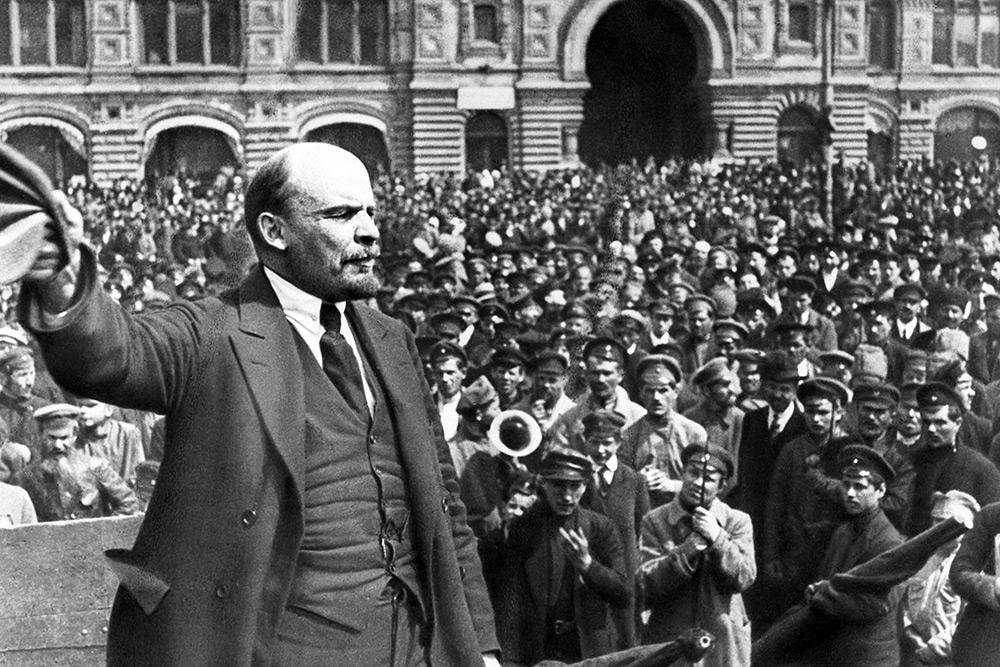 The NEP is the abandoning the policy of the "War communism", the fusion of the economic and socio-political affairs. It has been revived the private entrepreneurship in the country, all sorts of the workmen's cooperative associations gave the green light to the free trade and the peasants' demands were heard by the authorities. Moreover, the implementation of the NEP has begun precisely with the reforms in the agriculture. In fact, this meant the replacing of the surplus appropriation system with the food tax. The farmers breathed freely as it was put before the sowing campaign and it was unchanged throughout the year and the most important, this tax was two times less than the surplus. When the peasants supplied the entire volume of the state deliveries, they could freely sell the surplus of goods. As good reason as the material support and incentive to increase the labor productivity in the countryside?! And one leads to another. The authorities abolished the hated compulsory labor, allowed to rent the land, hire the employees that is to use the wage labor, the free trade and the cooperation, also it was applied the for-profit model.
The NEP is the abandoning the policy of the "War communism", the fusion of the economic and socio-political affairs. It has been revived the private entrepreneurship in the country, all sorts of the workmen's cooperative associations gave the green light to the free trade and the peasants' demands were heard by the authorities. Moreover, the implementation of the NEP has begun precisely with the reforms in the agriculture. In fact, this meant the replacing of the surplus appropriation system with the food tax. The farmers breathed freely as it was put before the sowing campaign and it was unchanged throughout the year and the most important, this tax was two times less than the surplus. When the peasants supplied the entire volume of the state deliveries, they could freely sell the surplus of goods. As good reason as the material support and incentive to increase the labor productivity in the countryside?! And one leads to another. The authorities abolished the hated compulsory labor, allowed to rent the land, hire the employees that is to use the wage labor, the free trade and the cooperation, also it was applied the for-profit model.
The following activities of the NEP were as follows: it was abolished the compulsory labor, it was allowed the freedom of trade, the land rent and the use of the hired labor, besides it was encouraged the cooperation development, also it was widely used the for-profit model, and the food stamp system was canceled. Very soon the NEP showed the positive results. Most of the agriculture was restored almost two years after its announcement. Thus, by 1925, the cultivated area amounted to almost 3 million hectares and it was possible to restore the pre-war level of the gross grain harvest but the gross cotton harvest has exceeded the pre-war level. The number of the livestock has been increased as compared to the first year of the NEP and by the mid-20s exceeded 26 million heads. The famous Uilskaya, Temirskaya, Kuyandinskaya fairs have been revived in the republic, there were more than 120 of them. The total volume of the trade at the fairs has exceeded 20-23 million rubles.
THE NEP DRAWDAUN
By the mid-20s, the leadership of the Bolsheviks had the tendency to draw down the new economic policy. Back in 1925, one of the leaders of the country, Nikolai Bukharin has urged the peasants to enrich themselves. Accumulate and develop the economy, - he said and just a few months later he declared the contrary. It has been made the first attempts to end with the NEP in the country. It has begun to banned the private enterprises and free trade, it had been implemented the tough public policy in the industry and agriculture. And here back in 1927 it was occurred the grain procurement crisis. The peasants did not want to sell the grain at the low prices. Then the State began to take it away that was reminiscent of the “War communism”. They did not want going further for the relaxation; the country set its sights on the industrialization. In 1929, the first five-year plan was approved in the USSR. The NEP was hardly possible in that conditions. The State decided itself to whom, how much and when to produce. Moreover, through the establishing collective farms it has been easier to get the required grain. On October 11 of 1931, it has been officially banned the private trade in the Soviet Union and that date is considered to be the legally formalized drawdown of the New Economic Policy.
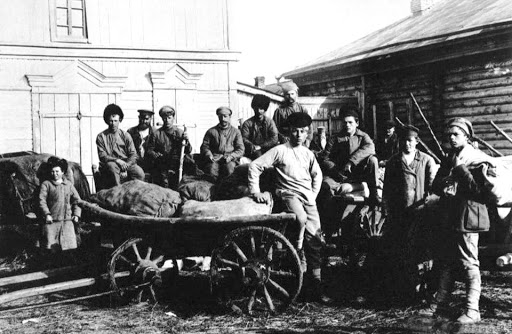






































 The NEP is the abandoning the policy of the "War communism", the fusion of the economic and socio-political affairs. It has been revived the private entrepreneurship in the country, all sorts of the workmen's cooperative associations gave the green light to the free trade and the peasants' demands were heard by the authorities. Moreover, the implementation of the NEP has begun precisely with the reforms in the agriculture. In fact, this meant the replacing of the surplus appropriation system with the food tax. The farmers breathed freely as it was put before the sowing campaign and it was unchanged throughout the year and the most important, this tax was two times less than the surplus. When the peasants supplied the entire volume of the state deliveries, they could freely sell the surplus of goods. As good reason as the material support and incentive to increase the labor productivity in the countryside?! And one leads to another. The authorities abolished the hated compulsory labor, allowed to rent the land, hire the employees that is to use the wage labor, the free trade and the cooperation, also it was applied the for-profit model.
The NEP is the abandoning the policy of the "War communism", the fusion of the economic and socio-political affairs. It has been revived the private entrepreneurship in the country, all sorts of the workmen's cooperative associations gave the green light to the free trade and the peasants' demands were heard by the authorities. Moreover, the implementation of the NEP has begun precisely with the reforms in the agriculture. In fact, this meant the replacing of the surplus appropriation system with the food tax. The farmers breathed freely as it was put before the sowing campaign and it was unchanged throughout the year and the most important, this tax was two times less than the surplus. When the peasants supplied the entire volume of the state deliveries, they could freely sell the surplus of goods. As good reason as the material support and incentive to increase the labor productivity in the countryside?! And one leads to another. The authorities abolished the hated compulsory labor, allowed to rent the land, hire the employees that is to use the wage labor, the free trade and the cooperation, also it was applied the for-profit model.
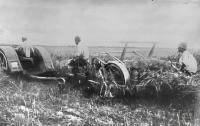
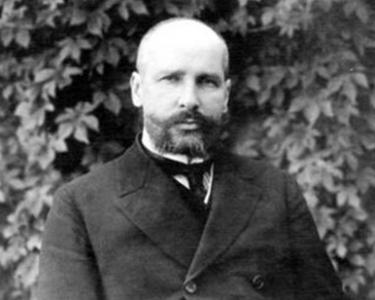
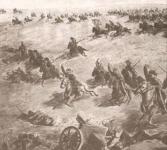
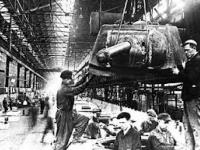
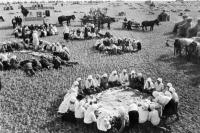

Обсуждение